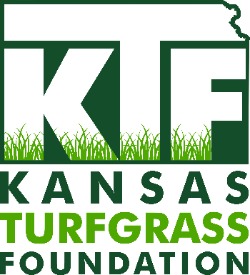Grasslike Weeds - Chemical Control
Many recently introduced turfgrasses are vastly superior to older types, especially in their tolerance to wide ranges of cultural and environmental conditions. Unfortunately, even superior turfgrass cultivars have limits to what they can tolerate. In most cases, when cultural or environmental conditions surpass minimum turfgrass tolerance levels, problems arise. For example, the presence of annual weeds such as crabgrass, goosegrass, barnyardgrass, knotweed, spurge, or henbit indicates problem growing conditions that allow these weeds to be more competitive than the desirable turf.
Management practices that discourage annual grassy weed growth of turf include:
- Fertilizing according to soil test recommendations, making sure adequate nutrients are available during periods of active turf growth.
- Watering deeply and infrequently, allowing the soil surface to dry between watering.
- Mowing at the proper height (2 to 2 1/2 inches for most cool season turfgrasses).
- Core cultivating, dethatching, or power raking during the fall when the turf is actively growing and weed seeds are less likely to germinate. Proper turf management is primary to a weed control program.
In some situations, turf is grown in environments that favor weed growth and development. Many annual grassy weeds are more tolerant of wet or compacted soils or shade than are turfgrasses. Altering the growing environment to favor the turfgrass can shift the competitive edge away from weeds.
The bottom line is that turfgrass breeding, selection, and evaluation has greatly improved turfgrasses. However, even new and improved turf selections are incapable of competing with weeds when mismanaged or planted into unfavorable environments. If producing high-quality turf is important, cultural practices and environmental alterations that enhance turf growth relative to weed growth are the basis of a sound weed management program.
Chemical Control of Annual Weeds
Maintaining a dense, vigorous turf is the best weed control. Occasionally, herbicide applications are mandated to reduce weed populations to tolerable levels. When annual grassy weeds such as crabgrass, goosegrass, barnyardgrass, fall panicum, or yellow foxtail become a problem, preventive preemergence herbicides are often used for control. When using any pesticide, read, understand, and follow the label directions for the safest, most efficient pest control.
Several general recommendations can be made when using these products.
- For annual grass control, apply preemergence herbicides prior to germination. The soil temperatures necessary for weed seed germination vary by species. For example, crabgrass germinates when soil temperatures are greater than 55° to 60°F for 7 to 10 consecutive days and continues to germinate in soil temperatures to 95°F. Goosegrass begins germinating when soil temperatures are above 65°F for several weeks, and yellow foxtail germinates at soil temperature of 68° to 92°F. Barnyardgrass germinates at soil temperatures between 72° and 90°F. The optimum soil temperature for fall panicum germination is 80°F. Monitor soil temperature, and apply a preemergence herbicide prior to reaching the weed germination temperature. This insures that the herbicide will be in place before weeds begin to germinate.
- Conduct any cultivation practices, such as core aerification or dethatching prior to herbicide application.
- Water following application according to the herbicide label direction.
- To lengthen the period of weed control, make a second application of the herbicide at a later date. Follow the specific label directions for rates and timing.
- Consult individual preemergence herbicide labels for the specific waiting period between herbicide application and overseeding or reestablishment. Spring seeding can produce stands of quality turf, provided weeds are controlled and adequate moisture is available for summer survival. Only one preemergence herbicide, siduron (Tupersan), is labeled for application to newly seeded areas for annual grass control. All other labeled preemergence herbicides have waiting periods between applications and seeding. Avoid applying a preemergence herbicide immediately before installing sod.



